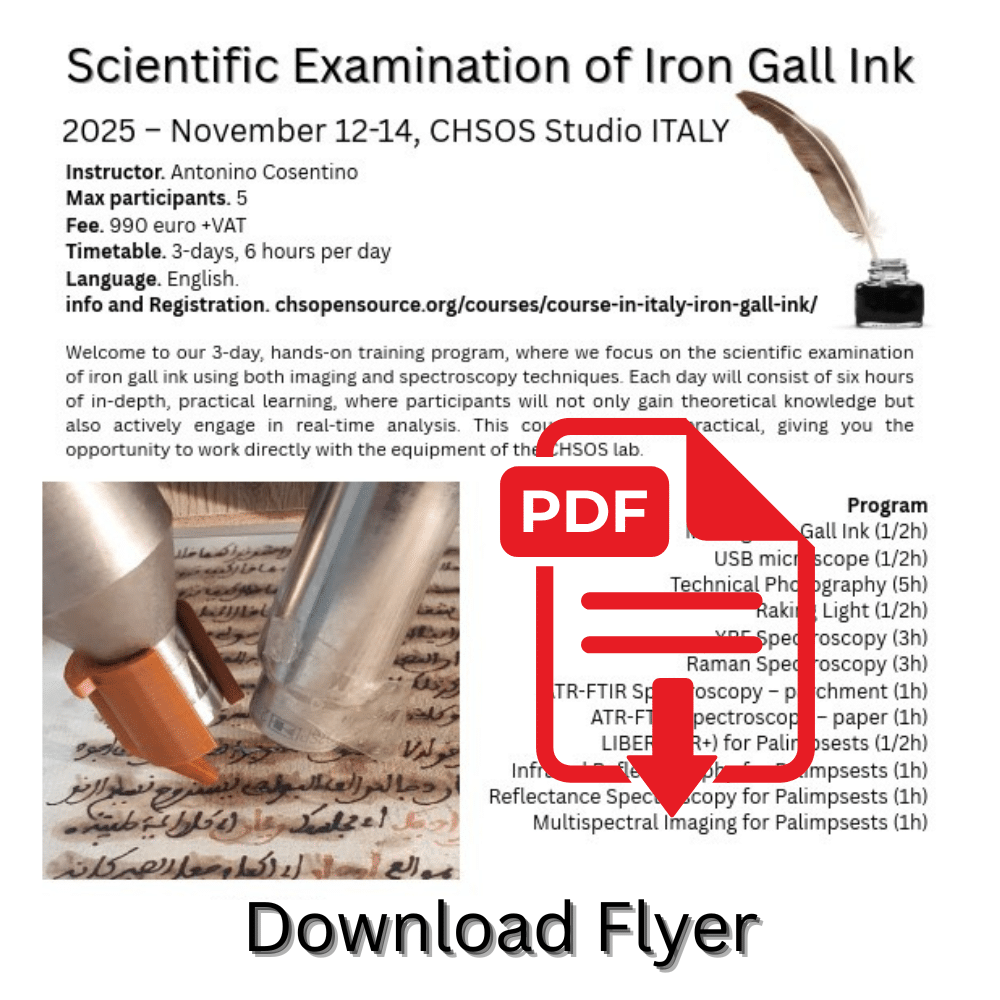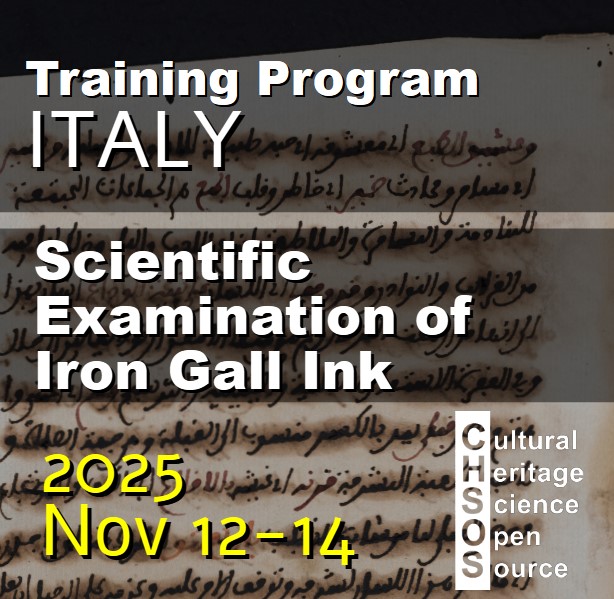Gorgias for Paper Conservation
Gorgias Reflectance Spectrometer can be used to evaluate degradation of museum and library objects when exposed to illumination. So far, this kind of studies has been done mostly with Colorimetry. Gorgias can add two more spectral regions to Colorimetry and become even more useful.
We made a brief experiment to illustrate this concept under the intense Italy’s Sun.
With Colorimetry the goal was to measure how the color changes when the object is exposed to some illumination. We think that using Gorgias reflectance spectrometer has a very important advantage over Colorimetry to evaluate paper conservation and degradation processes. Indeed, conservators use colorimetry to evaluate the change in color of paper when it is exposed to lighting. This process resembles visual examination of the object to evaluate fading that has been done by naked eyes. Colorimetry has added measurable and repeatable variables so the evaluation is more precise.
Though, colorimetry use just the visible (VIS) part of the spectrum. Why not to use also the UV and IR spectral regions that are covered by the Gorgias Spectrometer? These regions also can have information regarding the actual degradation of the paper. Why to consider just the visible region?
The Experiment
We show here a brief experiment with standard copy paper, just the once used for ink printers.
The paper was exposed to The Sun on sunny days in Italy just outside our CHSOS Studio, in our little courtyard.

We got 3 samples: brand new copy paper just out of the box, without any exposure; paper exposed for one day and paper exposed for 3 days.

To acquiring reflectance spectra we used our Gorgias with the same standard probe that we use for pigments analysis.

Results
We acquired the reflectance spectra of the 3 samples and we show together in the graph.
This clearly shows how the Sun’s exposure is affecting the reflectance spectra and the main change takes place just in the spectral region that is forbidden to any colorimeter, the UV region between 300 and 400 nm. Here we notice that the UV absorption due to the coating of the paper is affected and drastically decreases after irradiation. We could not measure this phenomenon with only Colorimetry, because colorimetry just shows the visible region.
The other observation is that the peak in the violet-blue region (400-450 nm) decreases after exposure to the Sun. This could be related again to the degradation of the paper coating that is responsible for fluorescence and so for the peak in this visible spectral region which makes the paper look even brighter.

Conclusions
This was just a brief experiment to show how Gorgias can be used to evaluate degradation processes in paper. Gorgias spectrometer is a valid tool to evaluate material changes that take place in paper after exposure to irradiation. It is easy and fast to acquire the reflectance spectra and it is worth to examine the visible as well as the UV and IR region.







